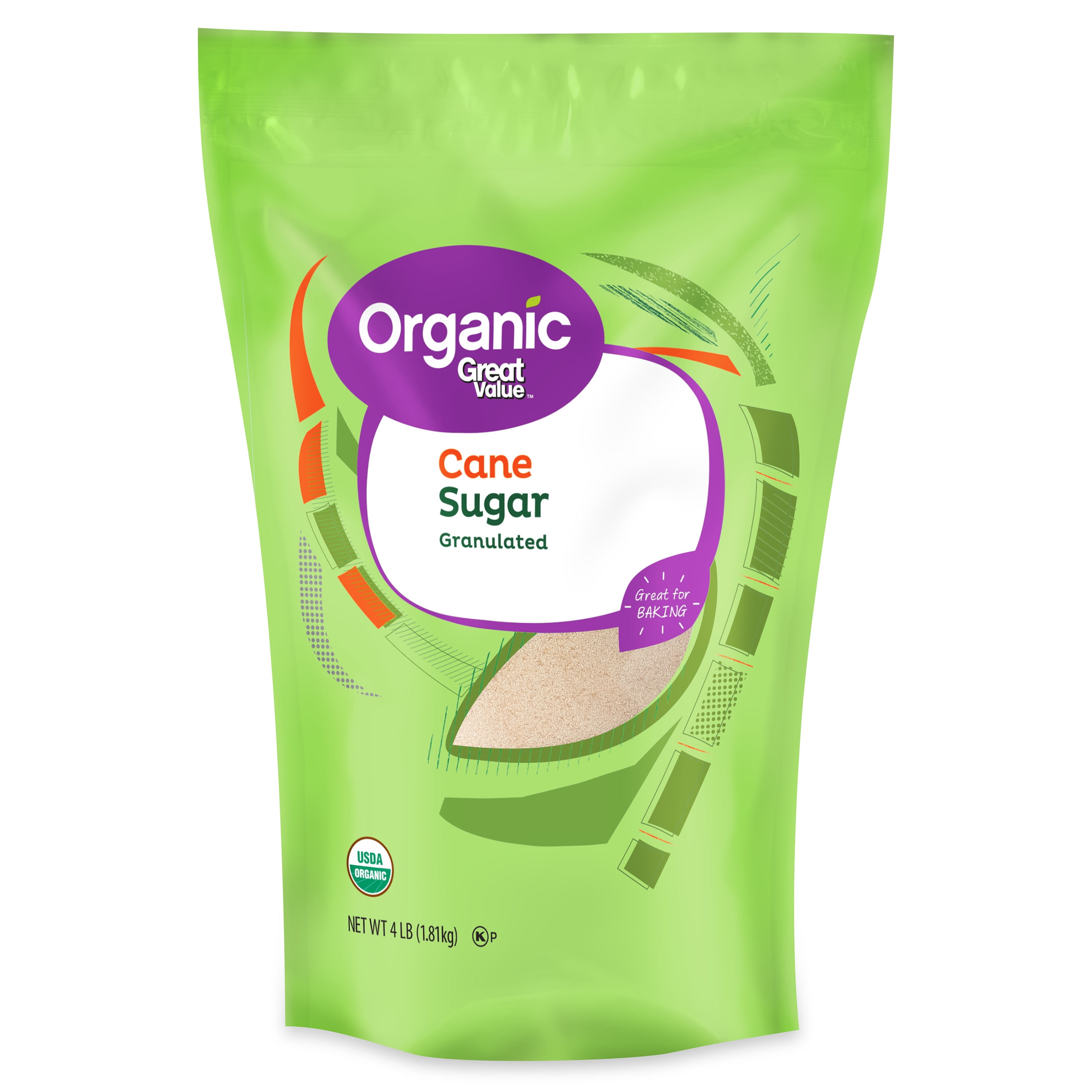An Extensive Overview to the Environmental Influence and Sustainability Practices in Cane Sugar Handling
The ecological effect of walking stick sugar processing offers a complicated range of challenges that warrant cautious examination. From soil deterioration and extreme water use to the carbon footprint connected with farming and manufacturing, the effects of typical practices are significant. What details techniques can be implemented to strike a balance in between productivity and environmental stewardship?
Overview of Walking Stick Sugar Handling
Walking cane sugar handling involves a collection of methodical actions that change sugarcane right into refined sugar. At first, harvested sugarcane is transferred to refining centers, where it undergoes cleansing to eliminate soil and debris. Following this, the walking stick is crushed to remove juice, which is then cleared up by eliminating contaminations through heating and the addition of lime.
The made clear juice undergoes evaporation, where water is gotten rid of to concentrate the sugar material. These crystals are separated from the remaining syrup utilizing centrifugation, resulting in raw sugar.
The final item is after that dried and packaged for circulation. Throughout this entire procedure, keeping performance and high quality control is vital to make certain the sugar satisfies sector standards. Each action in cane sugar handling not just adds to the end product but likewise has ramifications for source use and waste generation, establishing the stage for discussions on sustainability and ecological effects related to sugar manufacturing.
Ecological Obstacles of Production
The manufacturing of walking cane sugar presents numerous considerable ecological challenges that warrant focus. One key issue is the substantial usage of agrochemicals, consisting of plant foods and chemicals, which can cause soil destruction, biodiversity loss, and contamination of regional water sources. The runoff from sugarcane areas usually carries these chemicals right into nearby ecological communities, interfering with aquatic life and influencing the health of areas reliant on these water bodies.
Another difficulty is the high energy intake related to sugarcane handling. The boiling and refining phases need considerable warm, primarily created by shedding nonrenewable fuel sources, adding to greenhouse gas discharges. Furthermore, the expansive acreage needed for sugarcane cultivation can lead to logging and habitat destruction, more worsening climate adjustment and harmful wildlife.
Moreover, the labor techniques in some regions raise ethical concerns, as workers may face poor working conditions and insufficient incomes. This situation often bolsters a cycle of hardship in regional neighborhoods. Cane Sugar Processing. Dealing with these environmental challenges is essential for establishing extra sustainable methods in cane sugar manufacturing, inevitably profiting both the atmosphere and the areas entailed in this sector
Water and Land Usage Impact
Water resources and land usage are vital parts in the walking cane sugar industry that dramatically affect the environment. The farming of sugarcane calls for substantial water input, with quotes suggesting that it can take in approximately 2,000 liters of water per kilogram of sugar produced. This extensive use of water commonly causes exhaustion of local water sources, influencing not only the sugarcane vineyards yet also surrounding communities and areas that count on the same water resources for agriculture and domestic usage.

Furthermore, land use for sugarcane farming can lead to click this link deforestation and the conversion of all-natural habitats right into monoculture plantations. This practice diminishes biodiversity, interrupts local environments, and contributes to soil deterioration. The expansion of sugarcane fields typically trespasses on important agricultural land, producing competition for sources in between food and biofuel production.
Sustainable methods, such as enhancing irrigation methods and executing plant rotation, are important to mitigate these impacts. By adopting extra efficient water use and land management strategies, the walking stick sugar industry can decrease its eco-friendly footprint, ensuring an equilibrium between farming efficiency and environmental conservation.
Greenhouse Gas Emissions
Greenhouse gas emissions represent a substantial environmental worry within the cane sugar handling sector, specifically as farming practices broaden to satisfy international need. The cultivation of sugarcane, a plant that grows in exotic climates, depends heavily on synthetic fertilizers and pesticides, which add to nitrous oxide discharges. Additionally, land-use changes, consisting of deforestation for brand-new sugarcane haciendas, launch co2 stored in greenery and soil.
During handling, power intake is another major source of greenhouse gas exhausts - Cane Sugar Processing. Many sugar mills make use of nonrenewable fuel sources to power equipment and create warm, resulting in significant carbon footprints. Furthermore, the transportation of raw sugarcane and ended up products includes layers of emissions with fuel burning in vehicles
This involves evaluating existing farming techniques, refining techniques, and transport systems to identify areas for renovation and mitigation. Addressing greenhouse gas exhausts is crucial for promoting an extra lasting walking cane sugar market in a transforming climate.

Sustainable Practices and Innovations
Lasting methods and technologies are significantly crucial in the walking cane sugar processing industry as stakeholders seek to reduce environmental impacts while preserving efficiency. One substantial improvement is the application of incorporated plant monitoring, which maximizes source usage by combining dirt monitoring, insect control, and plant turning techniques. This strategy boosts return while decreasing chemical inputs and preserving soil health.
Additionally, the fostering of sustainable energy sources, such as biomass from sugarcane deposits, has actually gained grip - Cane Sugar Processing. By converting waste products right into energy, processing facilities can minimize their dependence on fossil gas, thereby lowering greenhouse gas these details discharges
Water monitoring practices have actually also seen renovations through the recycling and reusing of water in handling plants, considerably lowering freshwater consumption. Developments in technology, such as accuracy agriculture, allow farmers to check plant wellness and source use better, making certain sustainable farming techniques.
Furthermore, accreditation programs like Fair Profession and Rain forest Partnership motivate ecologically liable farming methods and advertise social equity within the supply chain. By welcoming these lasting techniques and developments, the cane sugar handling sector can boost its strength and contribute positively to ecological stewardship.
Conclusion
The ecological effect of walking stick sugar processing offers considerable difficulties, consisting of soil degradation, high water intake, and greenhouse gas exhausts, together with ethical problems associated with labor methods. Addressing these concerns via sustainable techniques, such as integrated plant administration, renewable resource adoption, and water recycling, is essential. By advertising eco responsible and socially equitable approaches in sugar manufacturing, the market can alleviate its damaging results, guaranteeing a much more sustainable future for both communities and communities involved in this industry.
Walking stick sugar handling includes a collection of systematic actions that transform sugarcane right into polished sugar. Each action in cane sugar processing not only adds to the last item yet also has effects for resource usage and waste generation, establishing the stage for conversations on sustainability and ecological effects connected with sugar production.
Greenhouse gas discharges stand for a substantial environmental problem within the walking cane sugar processing sector, especially as agricultural practices broaden to fulfill international need.Sustainable practices and technologies are significantly important in the he said cane sugar handling sector as stakeholders look for to lower environmental effects while keeping productivity.The ecological effect of walking stick sugar handling provides considerable difficulties, consisting of dirt degradation, high water intake, and greenhouse gas discharges, along with moral problems associated to labor methods.